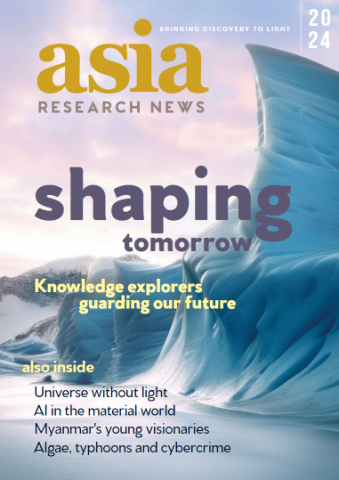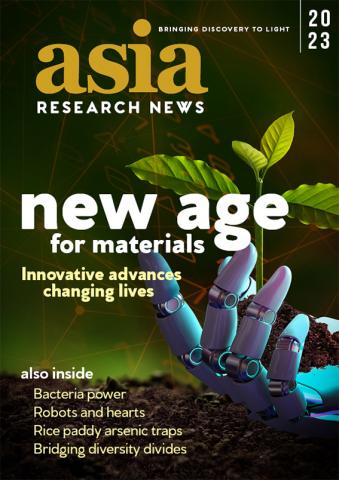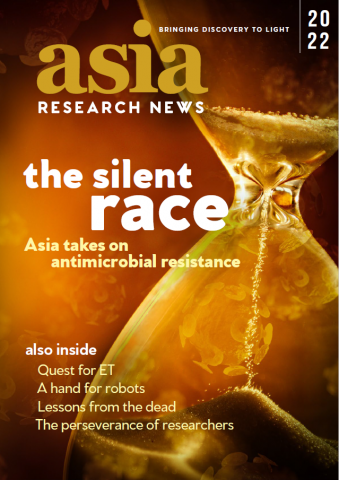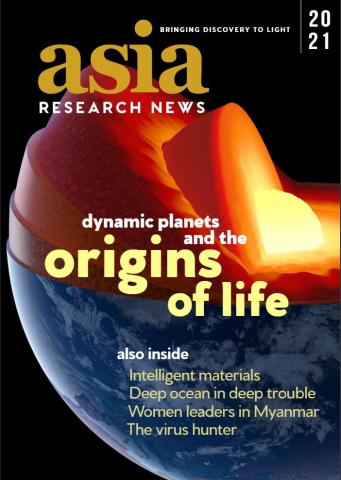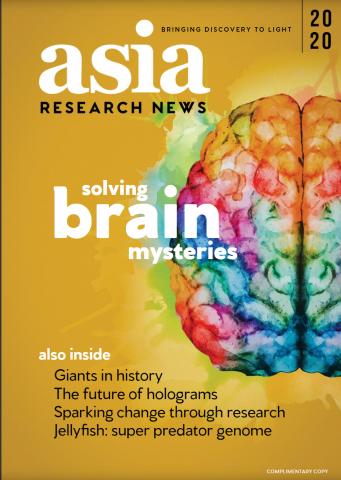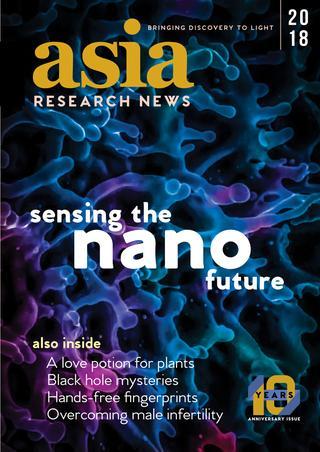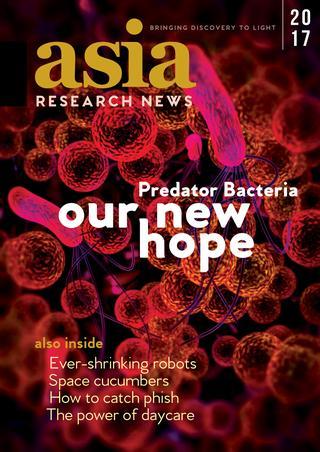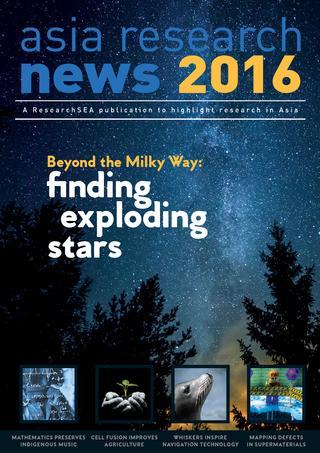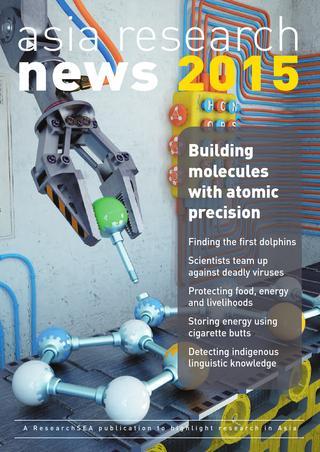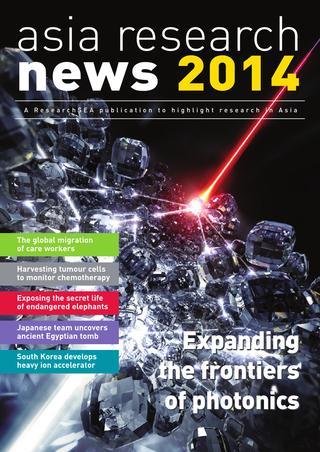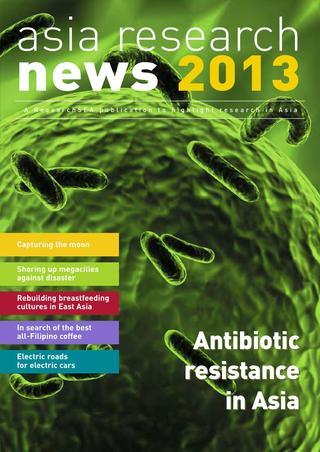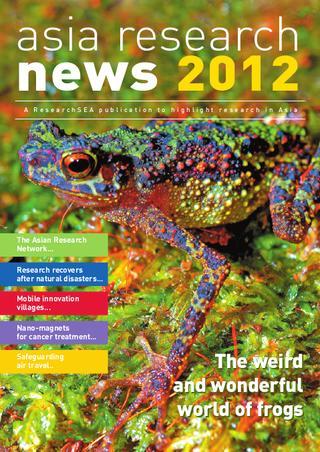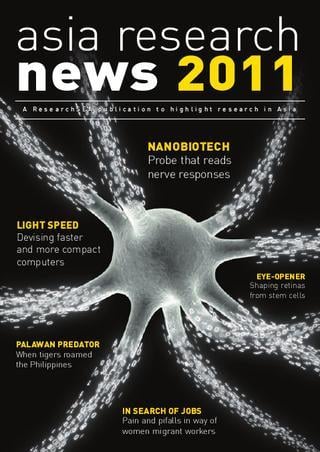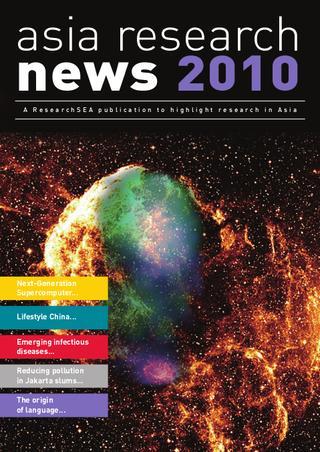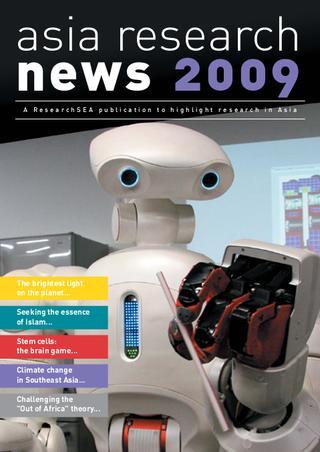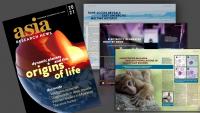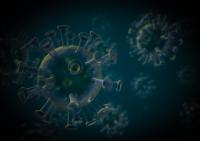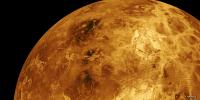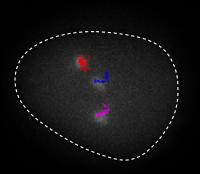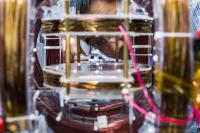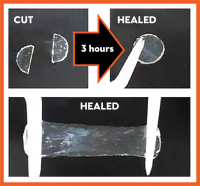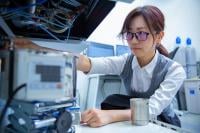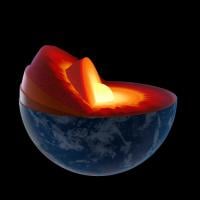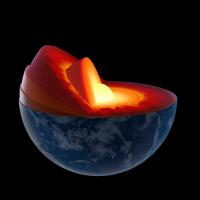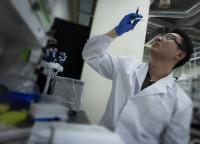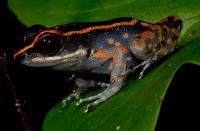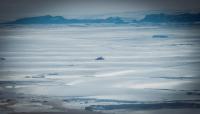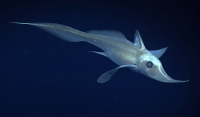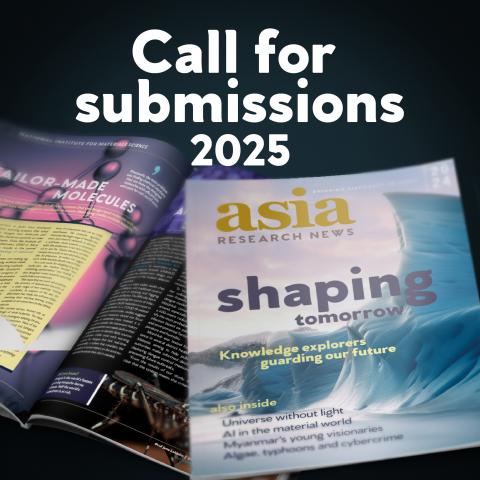2021
Read past issues:
2021 Magazine articles
Welcome to Asia Research News 2021Asia Research NewsThe Asia Research News magazine brings you fascinating research stories from diverse voices in environment, technology, materials, medicine, space and social sciences. The 2021 edition is out now. |
|
COVID-19: Our community on the front lines of researchAsia Research NewsThe global scientific community came together in an unprecedented way to respond to the COVID-19 pandemic. Here are selected research findings shared by our Asia Research News community. |
|
Giants in History featured in ARN2021Asia Research NewsInspirational figures from our ongoing Giants in History series are featured in the Asia Research News 2021 magazine. Because role models matter. |
|
Elevating women leaders in MyanmarInternational Development Research Centre (IDRC)Many hurdles remain to achieve gender equality in Myanmar politics and society at large. Research supported by Canada’s Knowledge for Democracy Myanmar Initiative is identifying opportunities to close the gap. |
|
Atmospheric tidal waves maintain Venus’s super-rotationHokkaido UniversityImages from the Akatsuki spacecraft unveil why Venus’s atmosphere rotates much faster than its surface. |
|
Watching DNA structural changes in real timeUlsan National Institute of Science and Technology (UNIST)Researchers have observed DNA spooling and unspooling in real time using CRISPR to attach fluorescent tags to very specific DNA points in living cells. |
|
Monitoring malaria parasite populations in Malaysian BorneoUniversiti Malaysia SarawakA simple tool allows researchers to track how different subpopulations of the Plasmodium knowlesi parasite are changing over time. |
|
Magnetic spray transforms objects into millirobotsCity University of Hong Kong (CityU)A spray-on magnetic coat turns any object into a robot controlled by a magnetic field. The biocompatible robots can walk, crawl and roll, and switch motions on demand. |
|
A fast spin test for urinary tract infectionUlsan National Institute of Science and Technology (UNIST)A spinning toy meets hydrodynamics and sets point-of-care diagnostics in motion. |
|
The perfect angle for e-skin energy storageDaegu Gyeongbuk Institute of Science and Technology (DGIST)The trick to extremely thin supercapacitors with improved performance is spraying graphene ink at an angle. |
|
Gaining more control over fuel cell membranesNational Institute for Materials Science (NIMS)Controlling the organization of molecules within polymer membranes could lead to more efficient fuel cells. |
|
Self-healing gels could power future electronicsNational Institute for Materials Science (NIMS)Ion-conducting gels that repair themselves following damage are under development for wearable electronics. |
|
Putting a spin on Heusler alloysNational Institute for Materials Science (NIMS)Heusler alloys are promising contenders for faster and more energy-efficient computing and memory storage devices. |
|
Manufacturing made easy with one-step printingThe Chinese University of Hong Kong (CUHK)Printing electronic circuits could soon get easier and cheaper. |
|
Elastomers develop stronger bonds of attachmentNational Institute for Materials Science (NIMS)Molecular interactions within gels and rubbers can be controlled to fabricate stronger and more elastic materials. |
|
AI helps design new alloys made to orderNational Institute for Materials Science (NIMS)An artificial intelligence approach extracts how an aluminium alloy’s contents and manufacturing are related to specific mechanical properties. |
|
Bringing the green revolution to electronicsNational Institute for Materials Science (NIMS)From biomemory to implants, researchers are looking for ways to make more eco-friendly electronic components. |
|
Weaving a tale of early-Earth ecosystemsEarth-Life Science Institute (ELSI), Tokyo Institute of Technology“By looking at substances in volcanos, lakes and hotsprings, you can start to see the ecosystems that existed billions of years ago,” says Mayuko Nakagawa, a microbiologist and specially-appointed assistant professor at the Earth-Life Science Institute (ELSI) based at the Tokyo Institute of Technology, Japan. She analyses components left by microorganisms with colleagues from various disciplines, while as a lab manager, she looks after cutting-edge equipment and visitors from different countries. |
|
見えない生態系が残した物語を紡ぐEarth-Life Science Institute (ELSI), Tokyo Institute of Technology火山や湖、温泉の物質からは数十億年前に存在した微生物の生態系が見えてくると語るのは、東京工業大学・地球生命研究所(ELSI)の中川麻悠子特任助教。異分野の研究者たちと共に微生物の作り出した成分を解析する傍ら、ラボマネージャーとして国内外の訪問者サポートや最先端の機材の管理などを行っている。 |
|
Demystifying planet births from deep EarthEarth-Life Science Institute (ELSI), Tokyo Institute of TechnologyEarth scientist Hitoshi Gomi investigates how plants are made by studying materials from the deep Earth, while creating a hospitable workplace at the Earth-Life Science Institute (ELSI) at the Tokyo Institute of Technology, Japan. He shared his research and the role of a lab manager with Asia Research News. |
|
地球の底から、惑星誕生の謎に迫るEarth-Life Science Institute (ELSI), Tokyo Institute of Technology地球の中心部の物質を研究しながら、共に研究をしている仲間が働きやすい環境を作るのが五味斎特任助教の日常だ。所属先の東京工業大学・地球生命研究所(ELSI)で地球科学者として行う研究活動と、ラボマネージャーの役目について、お話しを伺った。 |
|
The virus hunterEarth-Life Science Institute (ELSI), Tokyo Institute of TechnologyTomohiro Mochizuki tracks down viruses inside single-cell organisms thriving in boiling hot springs. His fieldwork is conducted in relatively extreme environments and, despite the significance of his investigations, he doesn’t need many fancy gadgets back at his lab at Japan’s Earth-Life Science Institute (ELSI). ARN asked Mochizuki about his virus-hunting exploits and what they involve. |
|
Early Earth droplets and the origins of lifeEarth-Life Science Institute (ELSI), Tokyo Institute of TechnologyTony Z. Jia is a specially-appointed assistant professor and lab manager at Japan’s Earth-Life Science Institute (ELSI), based at the Tokyo Institute of Technology. He is an astrobiologist and shared highlights from his dual research/management role. |
|
When evolutionary trees get froggyUniversiti Malaysia SarawakA new study on frogs shows gene flow and population structure should be considered to determine if morphologically similar and genetically distinct animals comprise separate species. |
|
Rare access reveals East Antarctic melting hotspotHokkaido UniversityIce is melting at a surprisingly fast rate underneath Shirase Glacier Tongue in East Antarctica due to the continuing influx of warm seawater into the Lützow-Holm Bay. |
|
Electricity generated drop by dropCity University of Hong Kong (CityU)A new device can light up 100 LED bulbs with a single drop of water. |
|
Machine learning predicts structural corrosionNational Institute for Materials Science (NIMS)Complex algorithms can be taught to predict steel corrosion rates in coastal regions, helping engineers choose the best materials for each location. |
|
Deep ocean in deep troubleHokkaido UniversityDeep sea animals face greater risks compared to those nearer the surface as they become less able to maintain their preferred thermal habitats with climate change. |


